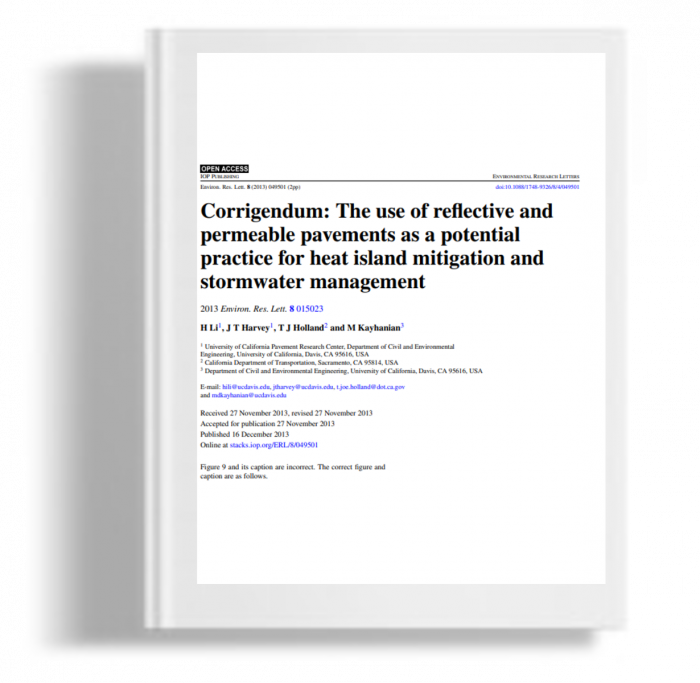Kami menggunakan cookies untuk membuat pengalaman Anda lebih baik. Untuk mematuhi petunjuk e-Pribadi yang baru, kami perlu meminta persetujuan Anda untuk menyetel cookies. Pelajari lebih lanjut .
Corrigendum : the use of reflective and permeable pavements as a potential practice for heat island mitigation and stormwater management
To help address the built environmental issues of both heat island and stormwater runoff, strategies that make pavements cooler and permeable have been investigated through measurements and modeling of a set of pavement test sections. The investigation included the hydraulic and thermal performance of the pavements. The permeability results showed that permeable interlocking concrete pavers have the highest permeability (or infiltration rate, ∼0.5 cm s−1 ). The two permeable asphalt pavements showed the lowest permeability, but still had an infiltration rate of ∼0.1 cm s−1 , which is adequate to drain rainwater without generating surface runoff during most typical rain events in central California. An increase in albedo can significantly reduce the daytime high surface temperature in summer. Permeable pavements under wet conditions could give lower surface temperatures than impermeable pavements. The cooling effect highly depends on the availability of moisture near the surface layer and the evaporation rate. The peak cooling effect of watering for the test sections was approximately 15–35 ◦C on the pavement surface temperature in the early afternoon during summer in central California
To help address the built environmental issues of both heat island and stormwater runoff, strategies that make pavements cooler and permeable have been investigated through measurements and modeling of a set of pavement test sections. The investigation included the hydraulic and thermal performance of the pavements. The permeability results showed that permeable interlocking concrete pavers have the highest permeability (or infiltration rate, ∼0.5 cm s−1 ). The two permeable asphalt pavements showed the lowest permeability, but still had an infiltration rate of ∼0.1 cm s−1 , which is adequate to drain rainwater without generating surface runoff during most typical rain events in central California. An increase in albedo can significantly reduce the daytime high surface temperature in summer. Permeable pavements under wet conditions could give lower surface temperatures than impermeable pavements. The cooling effect highly depends on the availability of moisture near the surface layer and the evaporation rate. The peak cooling effect of watering for the test sections was approximately 15–35 ◦C on the pavement surface temperature in the early afternoon during summer in central California

